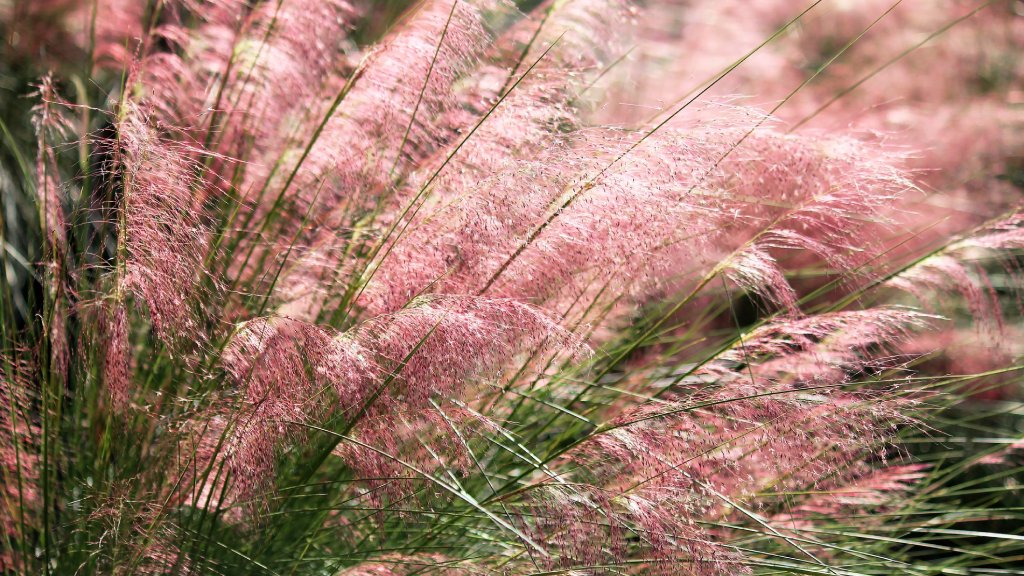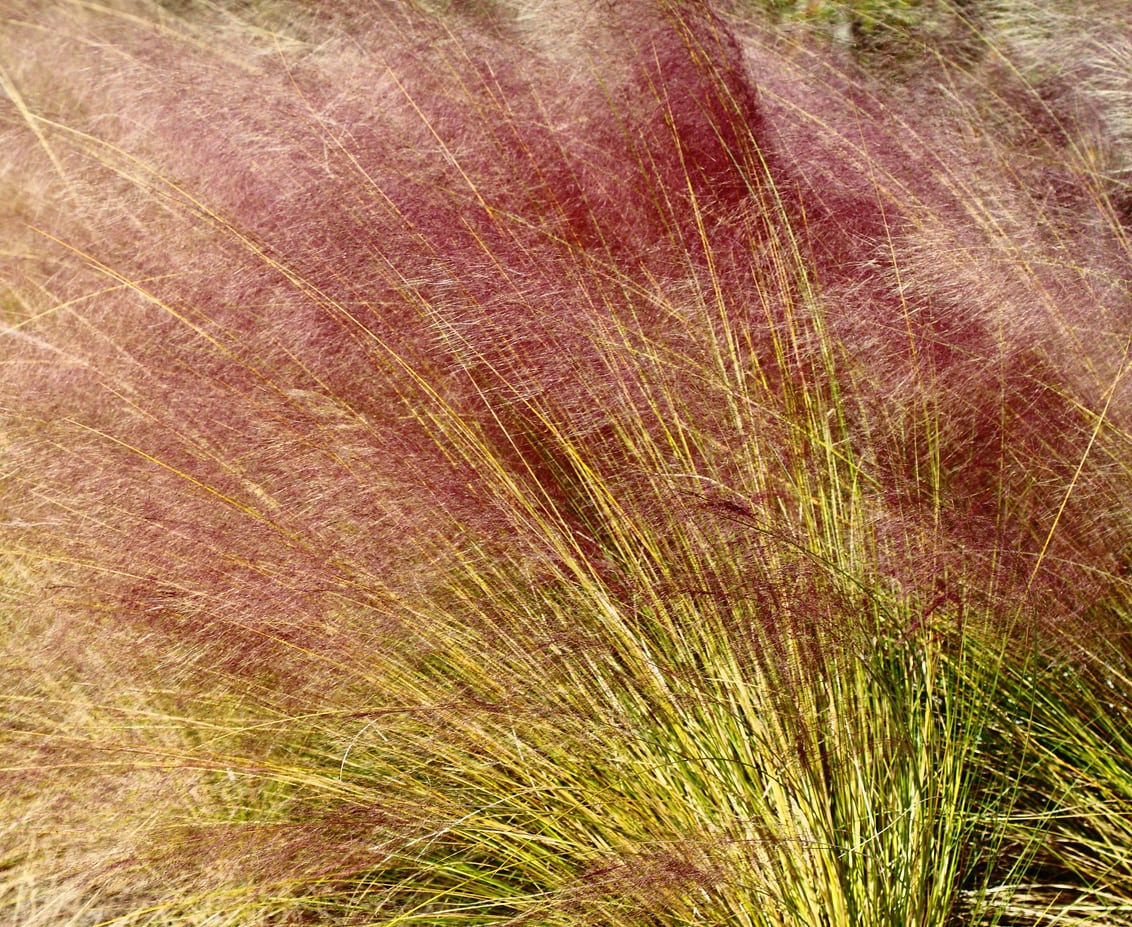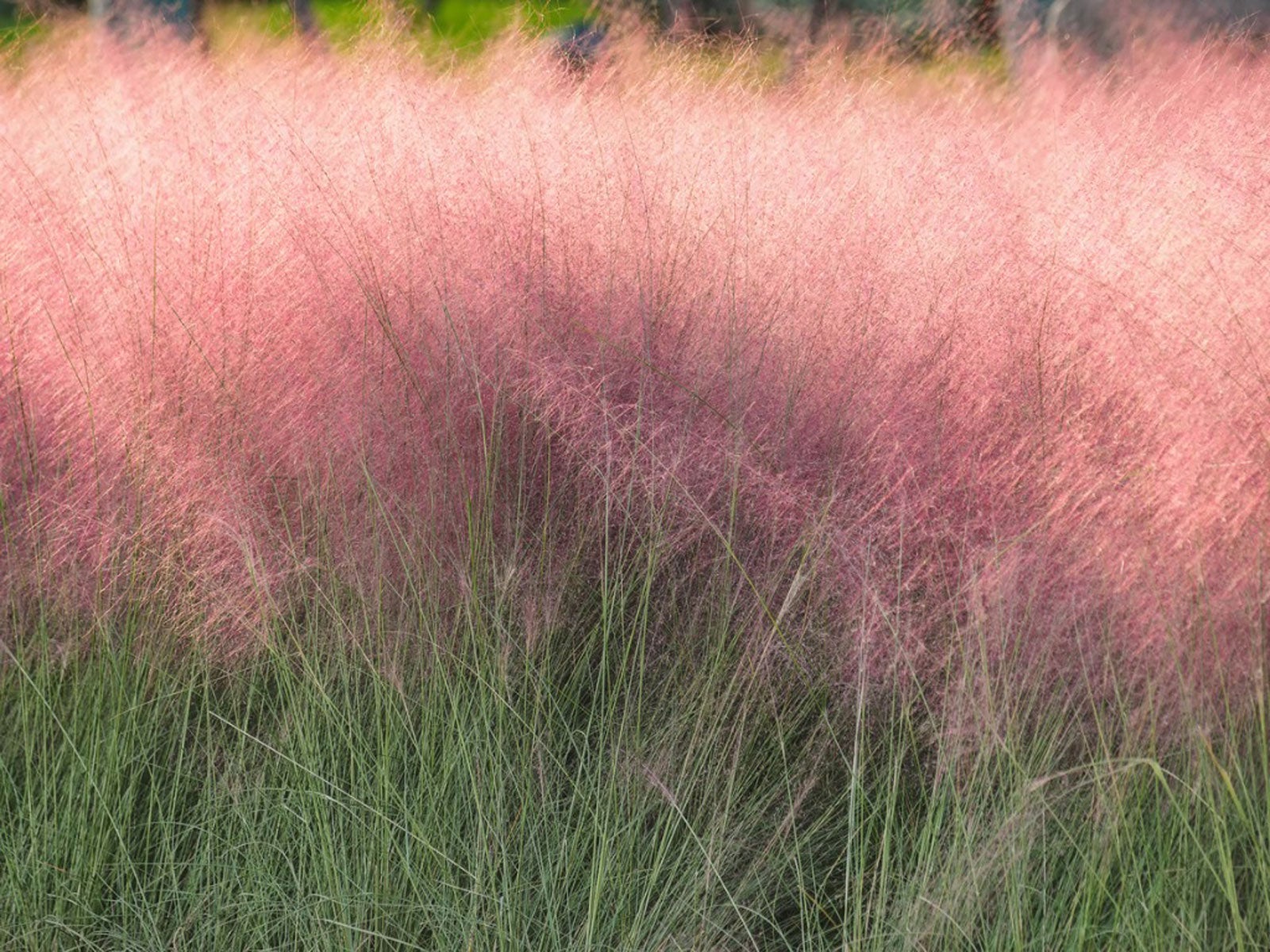Care For Muhlenbergia: How To Grow Pink Muhly Grass
Pink muhly grass care couldn’t be simpler - like most native plants, it is low maintenance and wonderfully easy to grow. This warm-season grass is a total delight in the right landscape.


Wondering how to grow pink muhly grass? If you think grasses can’t be stunning ornamentals, you may have never seen pink muhly grass. This perennial grass offers lovely swaying clumps in spring and gorgeous pink plums of flowers in summer and fall. The blossom fluff fades, but the dried flowers remain on the plant during dormancy to provide winter interest.
Quick Pink Muhly Grass FactCaring for Pink Muhly Grass
- Botanical name: Muhlenbergia capillaris
- Height: 2-3 feet (60-90 cm)
- Spread: 2-3 feet (60-90 cm)
- Sun exposure: full sun
- Soil requirements: Any soil that drains well
- Hardiness zones: 6-9
- When to plant: Spring or fall
Caring for Pink Muhly Grass
Pink muhly grass needs little hands-on care. It’s a native clumping grass that can thrive perfectly well on its own given the correct placement. In case you are wondering, the common name “muhly’ comes from the genus name Muhlenbergia.
Light
You can find ornamental grasses for shady landscapes, but pink muhly grass is not one of them. Plant this perennial grass in a sunny area with at least six hours a day of direct sun.
Temperature and Humidity
This is a grass that won’t thrive below USDA zone 6. It prefers a hot or warm climate without excess humidity. Too much humidity invites fungal diseases.
Watering
This amazing native grass won’t run up your water bill. Once established, it is drought tolerant and won’t need much more than the occasional rainfall in most situations. If it is a truly dry summer and the soil is bone dry to a depth of 2 inches (5 cm), give the grass about 1 inch (2.5 cm) of water to tide it over.
Fertilizer
One of the many benefits of selecting native plants is the fact that they rarely require any help in the nutrient department. They are used to the local soil. So don’t fertilize pink muhly grass unless a soil test indicates that some nutrient is missing.
Soil and Compost
Pink muhly grass will pass on wet soils and those with high alkalinity. It thrives on medium or dry soil that is pH neutral or slightly acidic. It will tolerate high-salt content soils without blinking an eye.
Gardening tips, videos, info and more delivered right to your inbox!
Sign up for the Gardening Know How newsletter today and receive a free copy of our e-book "How to Grow Delicious Tomatoes".
Problems, Pests & Diseases
With native grasses, if you give them the site they require, they are generally untroubled by diseases and pests. This is the case with pink muhly. It is a tough native grass and if it gets enough sun and the soil is medium to dry, it won’t face many issues. Wet soil can rot the roots, while too little sun will reduce or eliminate the flowers. High humidity can also lead to fungal diseases. The only remedy for these issues is replanting in a more appropriate location.
When and How to Plant Pink Muhly Grass
If this native sounds like a possibility for your yard, you might be wondering how to plant pink muhly grass. You can buy transplants at the garden store or grow it from seed. In either case, pick a sunny site with excellent drainage and prepare it for planting.
If you are growing from seed, buy the seeds or collect them from faded flowers in autumn. When to plant pink muhly grass? Plant the seeds or transplants in early spring. In a mild climate, sow seeds directly on top of the prepared soil. Otherwise, start them indoors, again simply on top of the soil, since the seeds must have sunlight to sprout. Lightly water the area by misting for the 10-14 days it takes the seeds to sprout.
Are you planting transplants? Place them at least 2 feet (61 cm) apart to give them room to spread. Remember that each clump will grow to 3 feet tall (0.9 m) and 2-3 feet (0.6-0.9 m) wide.
How to Prune Pink Muhly Grass
Prune pink muhly grass annually. This should happen just before the growing season begins, ideally in early spring. Never cut in summer since that will reduce the number of show-stopping flowers. Trim the grass but not too much, leaving 3-6 inches (7.5-15 cm) of growth above the crown of the plant. Use sharp pruners to make the job easier.
Propagating Pink Muhly Grass
Ornamental grass division is far and away the easiest method of propagating pink muhly grass, and you’ll have to do it anyway. The grass clumps get too packed together, which prevents the proper air flow from passing between them. Every few years you should dig out clumps, divide them into several chunks, and replant elsewhere. Note that the roots can be tough and may require serious tools to dislodge them; sometimes even a chainsaw.
Pink Muhly Grass Varieties to Try
If you don’t like pink or you just would like to experiment with other varieties of muhly grass, you are in luck. There are more than a few cool cultivars to try. We like:
- White Cloud - with ivory, billowy, upright. These are great as specimens.
- Rose Muhly - a shorter pink muhly grass with looser flowers, excellent for containers
- Regal Mist (Muhlenbergia capillaris Lenca) - small form, compact selection with pink/red blossoms, better for containers
Frequently Asked Questions
Does Pink Muhly Grass Return Every Year?
This perennial grass goes dormant in winter to regrow in spring.
When Does Pink Muhly Grass Bloom?
The cotton-candy flowers appear in late summer and continue into fall.
Is Pink Muhly Grass Invasive?
Pink muhly grass is a native species in the US and therefore cannot be labeled an invasive plant. Moreover, it does not crowd out other native species, one of the chief woes when invasive plants take over a landscape. Rather, it supports native insects and mammals.
What To Plant With Pink Muhly?
A garden of succulents and pink muhly is ravishing during the blooming season.

Teo Spengler is a master gardener and a docent at the San Francisco Botanical Garden, where she hosts public tours. She has studied horticulture and written about nature, trees, plants, and gardening for more than two decades. Her extended family includes some 30 houseplants and hundreds of outdoor plants, including 250 trees, which are her main passion. Spengler currently splits her life between San Francisco and the French Basque Country, though she was raised in Alaska, giving her experience of gardening in a range of climates.
-
 Looking For Plants To Give You The Soft And Fuzzies? Try These 5 Fuzzy Leaf Plant Options
Looking For Plants To Give You The Soft And Fuzzies? Try These 5 Fuzzy Leaf Plant OptionsLovers of texture, drama, silver foliage and tactile plants will adore these special sensory garden additions. These fuzzy leaf plant options will leave you all aglow
By Susan Albert
-
 Get Ready For A Summer Of Hummers! Grow These Full Sun Hummingbird Plants and Flowers
Get Ready For A Summer Of Hummers! Grow These Full Sun Hummingbird Plants and FlowersIf you’re lucky enough to enjoy a sunny backyard, make sure you are maxing out on your pollinator opportunities and grow these full sun hummingbird plants and flowers
By Tonya Barnett
-
 Muhly Grass Germination Tips: How To Grow Muhly Grass From Seed
Muhly Grass Germination Tips: How To Grow Muhly Grass From SeedMuhly grass is a pretty flowering native grass that grows well in warm climates. It requires almost no maintenance, while also producing gorgeous sprays of pink flowers. At little cost, you can grow muhly grass from seed for your yard or garden. Learn more here.
By Mary Ellen Ellis
-
 What Is Muhly Grass: Tips For Growing Muhly Grass
What Is Muhly Grass: Tips For Growing Muhly GrassMuhlbergia is a variety of ornamental grass with spectacular showgirl flair. The common name is muhly grass and it is extremely hardy and easy to grow. What is muhly grass? Read here to learn more.
By Bonnie L. Grant